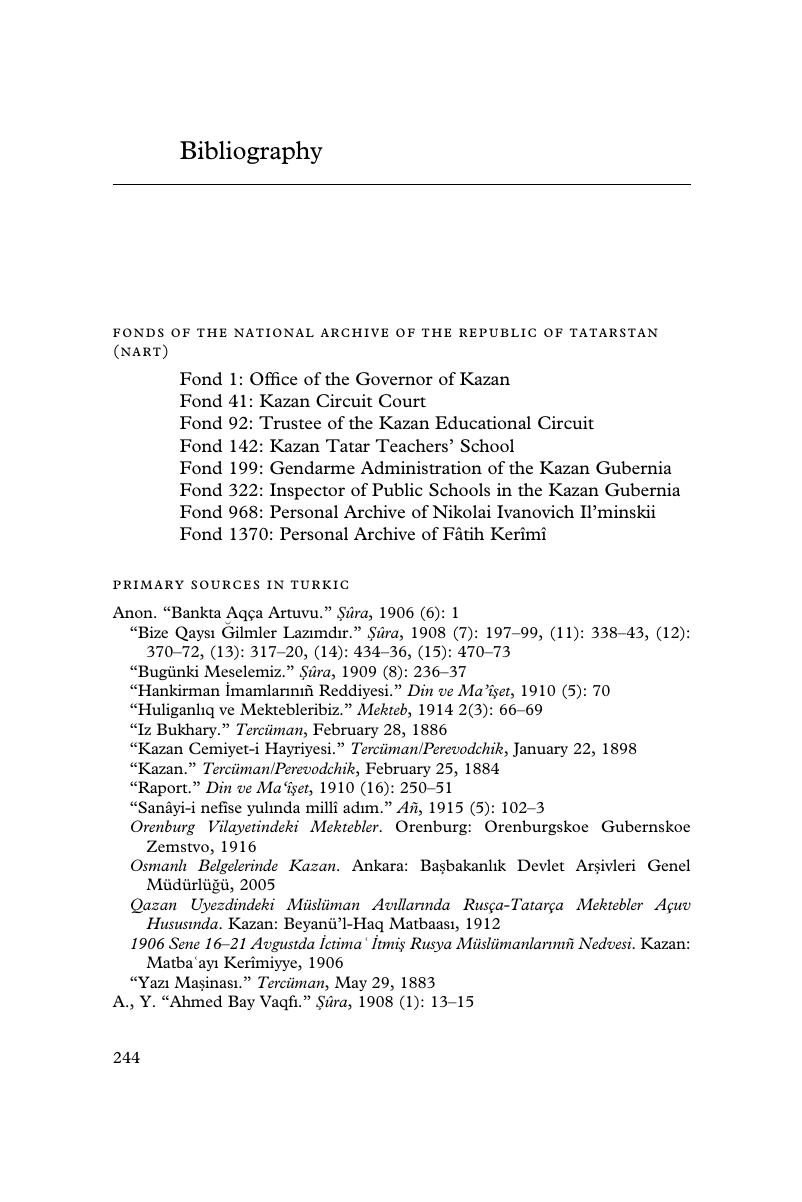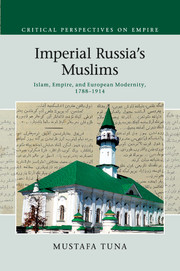Book contents
- Imperial Russia’s Muslims
- Critical Perspectives on Empire
- Imperial Russia’s Muslims
- Copyright page
- Dedication
- Contents
- Figures
- Book part
- Notes on transliteration and dates
- Introduction
- 1 A world of Muslims
- 2 Connecting Volga-Ural Muslims to the Russian state
- 3 Russification
- 4 Peasant responses
- 5 Russia's great transformation in the second half of the long nineteenth century (1860–1914)
- 6 The wealthy
- 7 The cult of progress
- 8 Alienation of the Muslim intelligentsia
- 9 Imperial paranoia
- 10 Flexibility of the imperial domain and the limits of integration
- Conclusion
- Bibliography
- Index
- References
Bibliography
Published online by Cambridge University Press: 05 June 2015
- Imperial Russia’s Muslims
- Critical Perspectives on Empire
- Imperial Russia’s Muslims
- Copyright page
- Dedication
- Contents
- Figures
- Book part
- Notes on transliteration and dates
- Introduction
- 1 A world of Muslims
- 2 Connecting Volga-Ural Muslims to the Russian state
- 3 Russification
- 4 Peasant responses
- 5 Russia's great transformation in the second half of the long nineteenth century (1860–1914)
- 6 The wealthy
- 7 The cult of progress
- 8 Alienation of the Muslim intelligentsia
- 9 Imperial paranoia
- 10 Flexibility of the imperial domain and the limits of integration
- Conclusion
- Bibliography
- Index
- References
Summary

- Type
- Chapter
- Information
- Imperial Russia's MuslimsIslam, Empire and European Modernity, 1788–1914, pp. 244 - 270Publisher: Cambridge University PressPrint publication year: 2015



